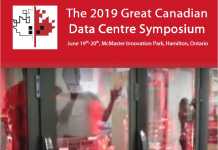 InsightaaS: Regular followers of ATN will have seen that I don’t highlight sponsors’ blog posts very often, but this post – which I ran across on LinkedIn – seemed to warrant some attention. In it, Dan Grade of Information Builders (sponsors of our Analytics section) makes the point that insight is only beneficial to a business when it leads directly to action, or “impact.”
InsightaaS: Regular followers of ATN will have seen that I don’t highlight sponsors’ blog posts very often, but this post – which I ran across on LinkedIn – seemed to warrant some attention. In it, Dan Grade of Information Builders (sponsors of our Analytics section) makes the point that insight is only beneficial to a business when it leads directly to action, or “impact.”
I would guess that most people involved in analytics projects would claim that their work is intended to lead to change, an assertion that Grady himself would likely agree with. The point of the featured post, though, is to ask how these initiatives achieve one of three objectives: moving a metric, changing a product, or changing a behaviour or process. It’s essential, Grady says, to move through the “three A’s” of analysis (how insight can make an ongoing difference to operations), audience (who will benefit?) and access (the best way to deliver analysis to prompt change). “If you can answer those 3 questions,” Grady says, “you have the foundation for creating Impact.”
Grady’s post is part of a wider debate on how analytics should be pursued within the organization, one in which Information Builders has a very strong point of view. In an interview with InsightaaS, Dr. Rado Kotorov, vice president of product marketing with Information Builders, discussed an “east coast, west coast” distinction in how data is managed and distributed, contrasting consumption of data by specialists and analysts (“east coast”) with “info apps” that reach across all users within an organization (“west coast”). Despite having an East coast background, I agree with both the distinction and the conclusion: the trend towards embedding analytics in apps designed to address recurring issues is stronger in California than in Boston or Toronto, and the benefits of analytics are more compelling when they are distributed in the context of task-specific applications. Grady’s post leaves more room for discussion than Kotorov’s dichotomy, but the end point is the same: in the current business context (and potentially, for some years to come), analytics work best when they are used by the most people, in the easiest-to-consume manner.
I attend a number of Data and Analytics industry events throughout the year. Of all of the presentations I sat through in 2014 two stand out. One was by Oakland A’s General Manager, Billy Beane at the Disney Analytics Conference, the other was by Ken Rudin, the Director of Analytics for Facebook at a TDWI Big Data Analytics Conference.
Billy Beane’s approach to analytics has been well documented in the book and film Money Ball, Ken’s approach hasn’t had nearly as much fanfare, but the core concept is probably more applicable to most of our own “Big Data” projects.
To paraphrase – “The focus of Big Data projects should be IMPACT, not INSIGHTS”. Impact, not Insights, it makes so much sense. Just that mantra would have been enough of a takeaway for me, but he went on to define what IMPACT means to his organization, he defined it as 3 things:
- Move a metric
- Change a product
- Change a behavior or a process
Ask yourself, how many of the data driven projects that you are currently working will result in one of those three outcomes? So much of the industry buzz around Big Data is focused on analysts who are capturing large volumes of disparate data, visualizing that data in data discovery tools and uncovering new Insights. But then what? Does just visualizing the data and finding outliers accomplish one of the three things above?
Big Data projects that are focused just on insights are like reading all the information about the trendy new diet and then continuing to eat what you have been or signing up for the gym and never going…
Read the post on LinkedIn: Link







[…] Source: http://www.insightaas.com […]